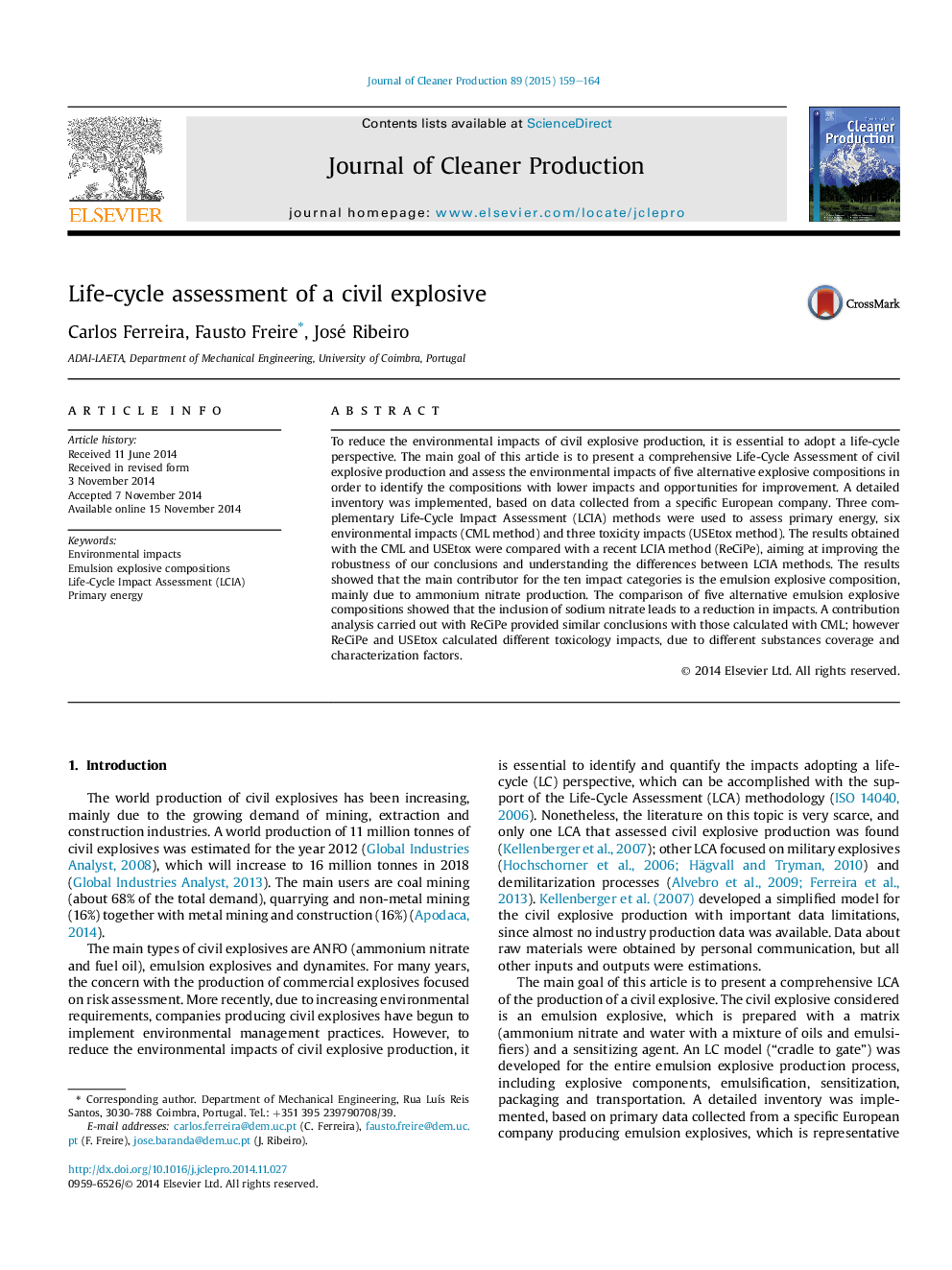| Article ID | Journal | Published Year | Pages | File Type |
|---|---|---|---|---|
| 8105058 | Journal of Cleaner Production | 2015 | 6 Pages |
Abstract
To reduce the environmental impacts of civil explosive production, it is essential to adopt a life-cycle perspective. The main goal of this article is to present a comprehensive Life-Cycle Assessment of civil explosive production and assess the environmental impacts of five alternative explosive compositions in order to identify the compositions with lower impacts and opportunities for improvement. A detailed inventory was implemented, based on data collected from a specific European company. Three complementary Life-Cycle Impact Assessment (LCIA) methods were used to assess primary energy, six environmental impacts (CML method) and three toxicity impacts (USEtox method). The results obtained with the CML and USEtox were compared with a recent LCIA method (ReCiPe), aiming at improving the robustness of our conclusions and understanding the differences between LCIA methods. The results showed that the main contributor for the ten impact categories is the emulsion explosive composition, mainly due to ammonium nitrate production. The comparison of five alternative emulsion explosive compositions showed that the inclusion of sodium nitrate leads to a reduction in impacts. A contribution analysis carried out with ReCiPe provided similar conclusions with those calculated with CML; however ReCiPe and USEtox calculated different toxicology impacts, due to different substances coverage and characterization factors.
Related Topics
Physical Sciences and Engineering
Energy
Renewable Energy, Sustainability and the Environment
Authors
Carlos Ferreira, Fausto Freire, José Ribeiro,
